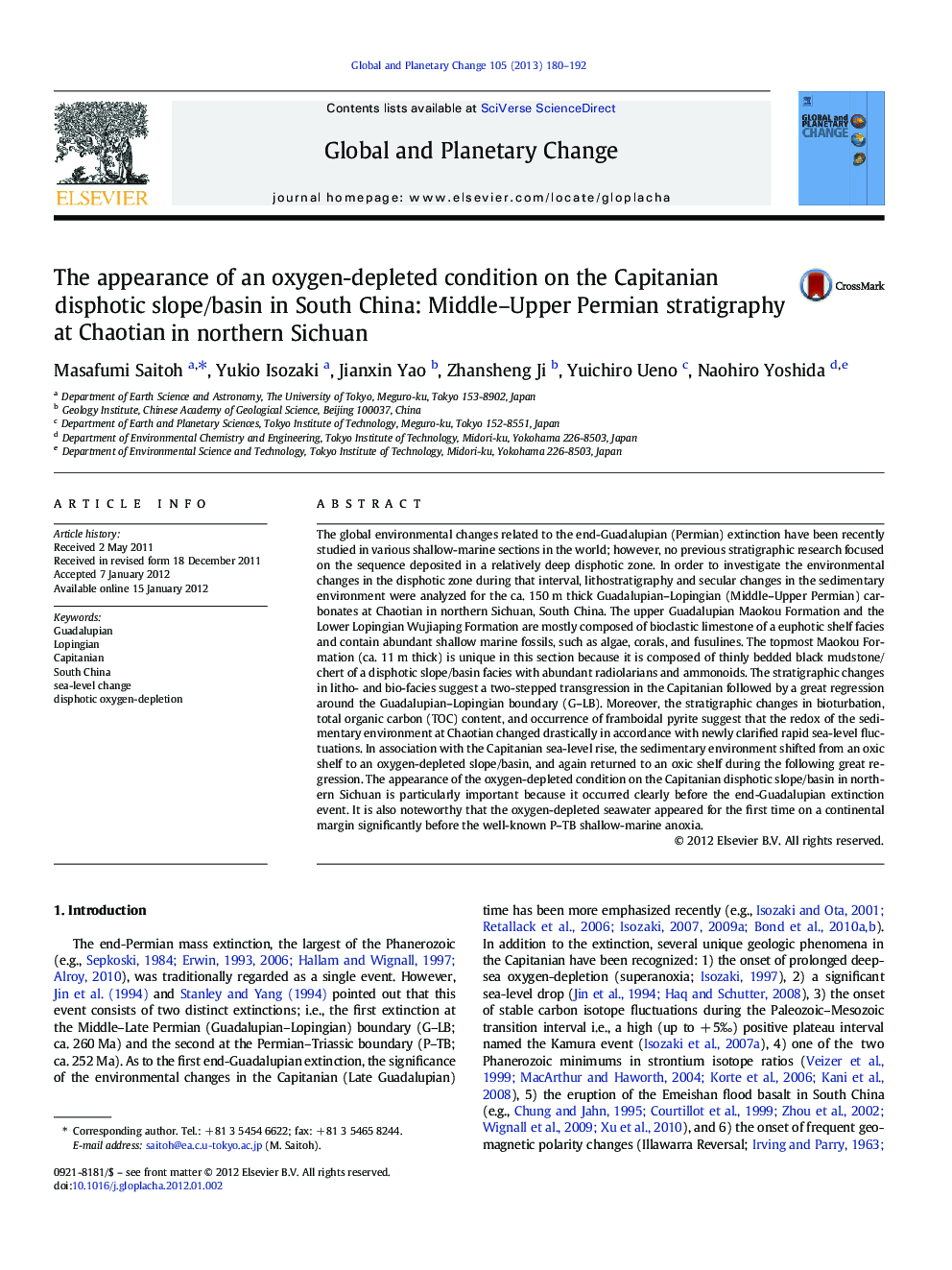| Article ID | Journal | Published Year | Pages | File Type |
|---|---|---|---|---|
| 4463612 | Global and Planetary Change | 2013 | 13 Pages |
The global environmental changes related to the end-Guadalupian (Permian) extinction have been recently studied in various shallow-marine sections in the world; however, no previous stratigraphic research focused on the sequence deposited in a relatively deep disphotic zone. In order to investigate the environmental changes in the disphotic zone during that interval, lithostratigraphy and secular changes in the sedimentary environment were analyzed for the ca. 150 m thick Guadalupian–Lopingian (Middle–Upper Permian) carbonates at Chaotian in northern Sichuan, South China. The upper Guadalupian Maokou Formation and the Lower Lopingian Wujiaping Formation are mostly composed of bioclastic limestone of a euphotic shelf facies and contain abundant shallow marine fossils, such as algae, corals, and fusulines. The topmost Maokou Formation (ca. 11 m thick) is unique in this section because it is composed of thinly bedded black mudstone/chert of a disphotic slope/basin facies with abundant radiolarians and ammonoids. The stratigraphic changes in litho- and bio-facies suggest a two-stepped transgression in the Capitanian followed by a great regression around the Guadalupian–Lopingian boundary (G–LB). Moreover, the stratigraphic changes in bioturbation, total organic carbon (TOC) content, and occurrence of framboidal pyrite suggest that the redox of the sedimentary environment at Chaotian changed drastically in accordance with newly clarified rapid sea-level fluctuations. In association with the Capitanian sea-level rise, the sedimentary environment shifted from an oxic shelf to an oxygen-depleted slope/basin, and again returned to an oxic shelf during the following great regression. The appearance of the oxygen-depleted condition on the Capitanian disphotic slope/basin in northern Sichuan is particularly important because it occurred clearly before the end-Guadalupian extinction event. It is also noteworthy that the oxygen-depleted seawater appeared for the first time on a continental margin significantly before the well-known P–TB shallow-marine anoxia.
► Lithostratigraphy of the Middle–Upper Permian rocks was analyzed at Chaotian, China. ► Large sea-level fluctuations in association with redox changes were clarified. ► Oxygen-depletion in the Capitanian disphotic zone occurred before the extinction.
